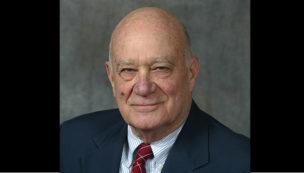
E.M Forster wrote: “Only connect the prose and the passion, and both will be exalted, and human love will be seen at its height. Live in fragments no longer.”
Suzanne Gordon, in her provocative book, “Lonely in America,” and Philip Slater in “The Pursuit of Loneliness” punctuate Forster’s emphasis on the value of personal relationships.
In his book, “Howard’s End” (written a century ago), Forster was already warning about how the frenetic pace of life, bolstered by advancing technologies, detracts from building caring, empathetic and supportive relationships.
For those of us who are older (80 and beyond), the demands of jobs may have decreased, but where do we stand regarding our “human capital” — the depth of associations we have built with relatives and friends over the years?
As Gail Sheehy emphasized in “Passages,” most of us have highlighted achievements in our jobs and careers. How much time was left to cultivate relationships? How many people even try?
Both Gordon and Slater emphasize that many people have a host of reasons (beyond “time poverty”) for not seeking closer ties with relatives and friends. Indeed, Gordon concludes that many Americans are “intimacy anorexics.”
Years ago Harvard scholar, Robert Putnam, punctuated this view with his study, aptly titled “Bowling Alone.”
Is it harder for older folks to cultivate deep and sustained relationships than it is for younger people? I would contend that we elders have many advantages to do so — what we need is the will “to connect.”
There are many ways to build close, enduring and gratifying ties, regardless of age. They require investing one’s self in talk and interaction with others.
Many may have concerns about risks of rejection, or loss privacy? But not to try means being more isolated, and lacking a chance for the joy and comforts of caring relationships.
A creative idea four years ago was developing “virtual villages;” more than 100 emerged in 40 states. (There is also a Village to Village International.)
The major focus (in ways, similar to AARP) is to help older people connect with others their own age as their spouses die, they divorce, or friends and relatives relocate to other areas.
The Village website indicates: “Village members experience reduced isolation, increased independence, and enhanced purpose of life.”
Volunteers go to assist in actual communities: “These feet on the street resources, focused on social determinants of health, positively improve population health.”
Membership requires an annual fee, but as with AARP, there are many cost-effective benefits because of attractions of scale sales.
Most dramatic is the description of “armies of volunteers who help lower costs for members by doing yard work, picking up prescriptions, taking members shopping.”
Dr. Marc Agronin, author of “How We Age” notes, “As people get older, they face the major dilemma of isolation. Having a local network of people to engage with opens up whole new worlds. It’s about discovering your strengths and the joy of living.”
Virtual village studies show satisfaction for elders staying in their own homes while finding a variety of ways to connect with other folks.
Closer to our North Shore, a few days ago 160 people came to Mannie Corman’s 100th birthday party. (Having that many people who still know you in old age is remarkable in itself.)
Mr. Corman wore a black shirt with an inscription: “Vintage 1918: Aged to Perfection.”
But this was no ordinary birthday party! As guests assembled for the brunch, a curtain was drawn and out came a flower girl with a ring, followed by Mannie (now in a tux), along with his long-time girlfriend, Judith (age 76) to be married.
Their wedding song was “Young at Heart.”
The rabbi who conducted the services for the oldest groom he ever married said: “People like Mannie and Judith recognize the importance of each and every day. They don’t worry about tomorrow. They may think about yesterday, but they concentrate on today.”
Judith’s 43-year old son said of Mannie: “You look at him and you think, ‘He’s an old man,’ but he’s so funny with these amazing stories. They’re both adventurers, and they love that in each other.”
This friendship, since 1999, blossomed into deep romance that survived a few years of conflict about where to live.
Mannie, understandably, did not want to leave Brooklyn, while Judith had ties with grandchildren and friends in her suburban community.
But true love found trade-off paths forward.
Their wedding song continued: “Fairy tales can come true; it can happen to you if you are young at heart.”






